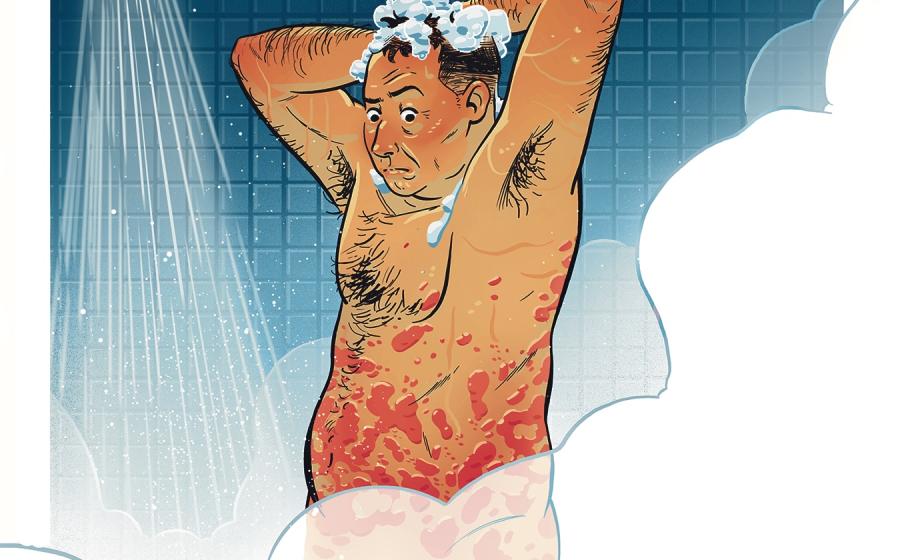The Coral Classroom: A Lesson in Restoring Reefs and Mobilizing Action
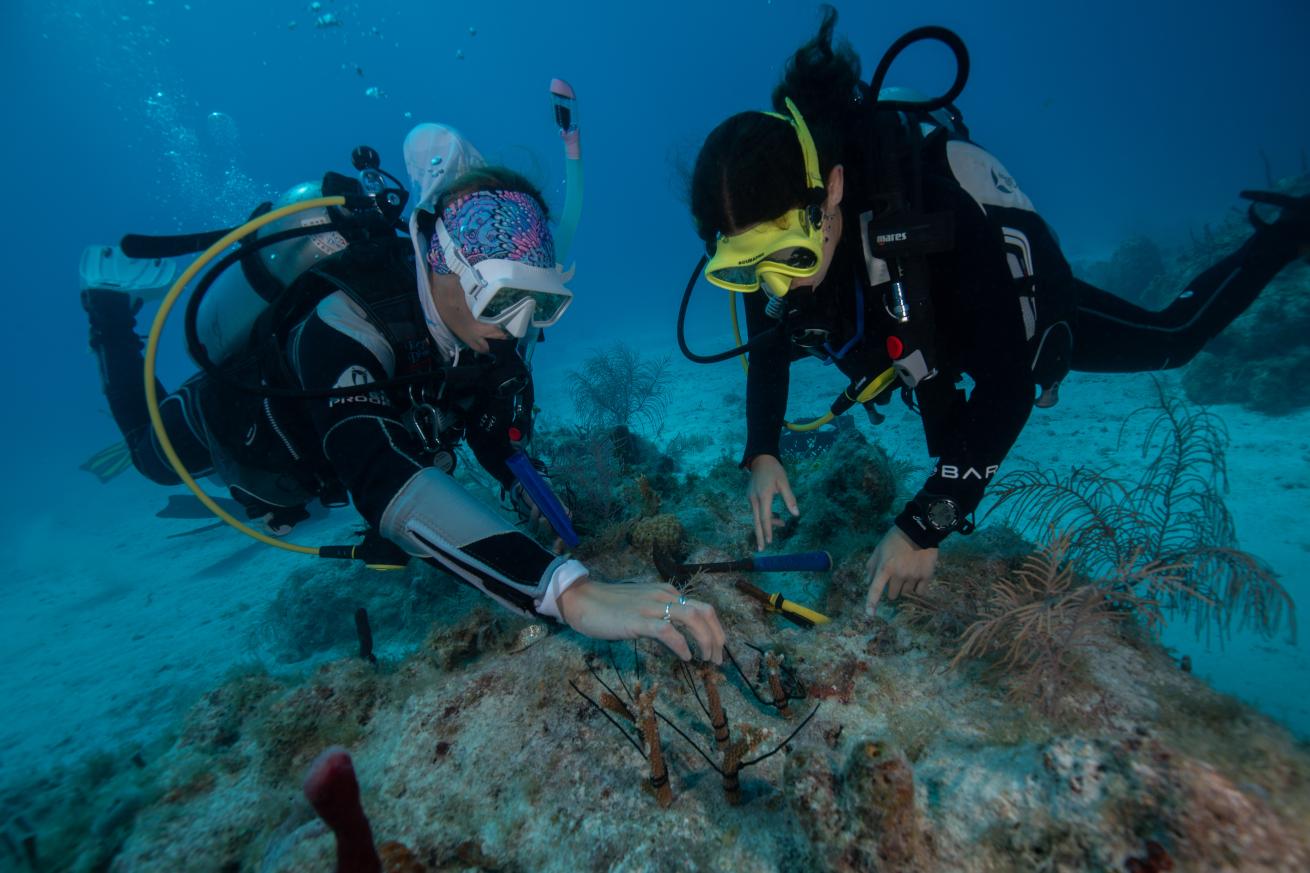
Kristin PaterakisAn intern with I.CARE assists Rhyanna Rispoli in planting coral
I was mesmerized by the colorful fish as they painted vibrant shades of blues, pinks, greens and purples gracefully through the water. I was 16, experiencing scuba diving for the first time at the Island School in Eleuthera, Bahamas. After some initial discomfort upon submersion, I was captivated.
This experience inspired my career in marine science and conservation, and I ultimately became a dive professional and content creation specialist for Scuba Diving magazine. My own fascination with marine life as a teen inspired me to volunteer with the youth scientific diving nonprofit DiveN2Life.
Since 2022, I have volunteered as a scuba instructor and scientific diver, mentoring and accompanying DiveN2Life participants in conservation and research projects. I now find myself in a large barn manipulating dead coral around a wood block practicing how to outplant coral with scientific divers-in-training Rhyanna Rispoli, age 12, and Riley Young, 11.
We are here for a two-day coral conservation training run by a local organization Islamorada Conservation and Restoration Education (I.CARE). Founded in 2021 by Key Dives owner and Seiko Sea Hero Mike Goldberg and coral scientist Dr. Kylie Smith, I.CARE makes coral restoration accessible to any recreational diver.

Kristin PaterakisParticipants learn how to secure coral fragments to substrate on land before taking their skills underwater at I.CARE.
A Humbling Experience
Norah and four other interns demonstrate how to outplant coral—first on land for practice, and then underwater where communication is more difficult. Today we will be working with staghorn coral, which was once a dominant species on the diverse Florida reef ecosystem but has now been reduced to a mere 3 percent of its former abundance due to several factors, including coral disease and bleaching events.
Only the strongest corals with specific genotypes (grown in a land-based nursery) are picked for the project. “They're going to have the greatest potential to survive and reproduce on their own,” says Smith.
Underwater, our quirky and energetic team leader, Norah, led us to our first task: scrubbing competitive algae from the bare reef at the outplanting site to increase the chance of successful coral settlement.
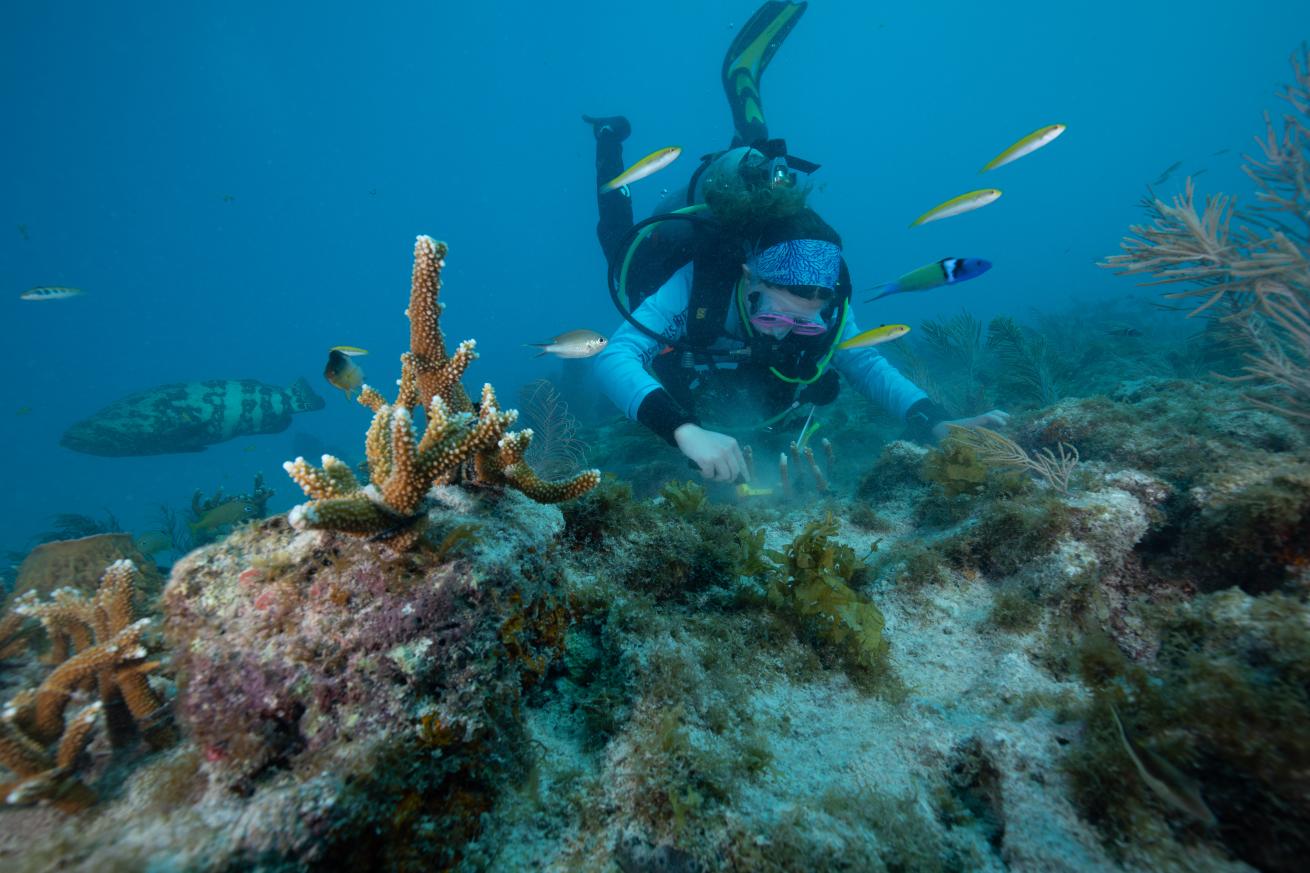
Kristin PaterakisScientific diver-in-training Riley Young cleans coral as a goliath grouper swims by in the background
We work in silent determination—banging in nails, carefully placing pieces of coral on the reef and tightening zip ties around the fragments.
When the intern checks my work, she wiggles the coral right out of the substrate with ease, proving that this coral would not withstand strong wave energy. Humbled, I go back to work.
Our group of 30 volunteer divers from around the country outplants 100 corals this sunny afternoon.
Related Reading: An Unforgettable Dive: A Cry for Corals
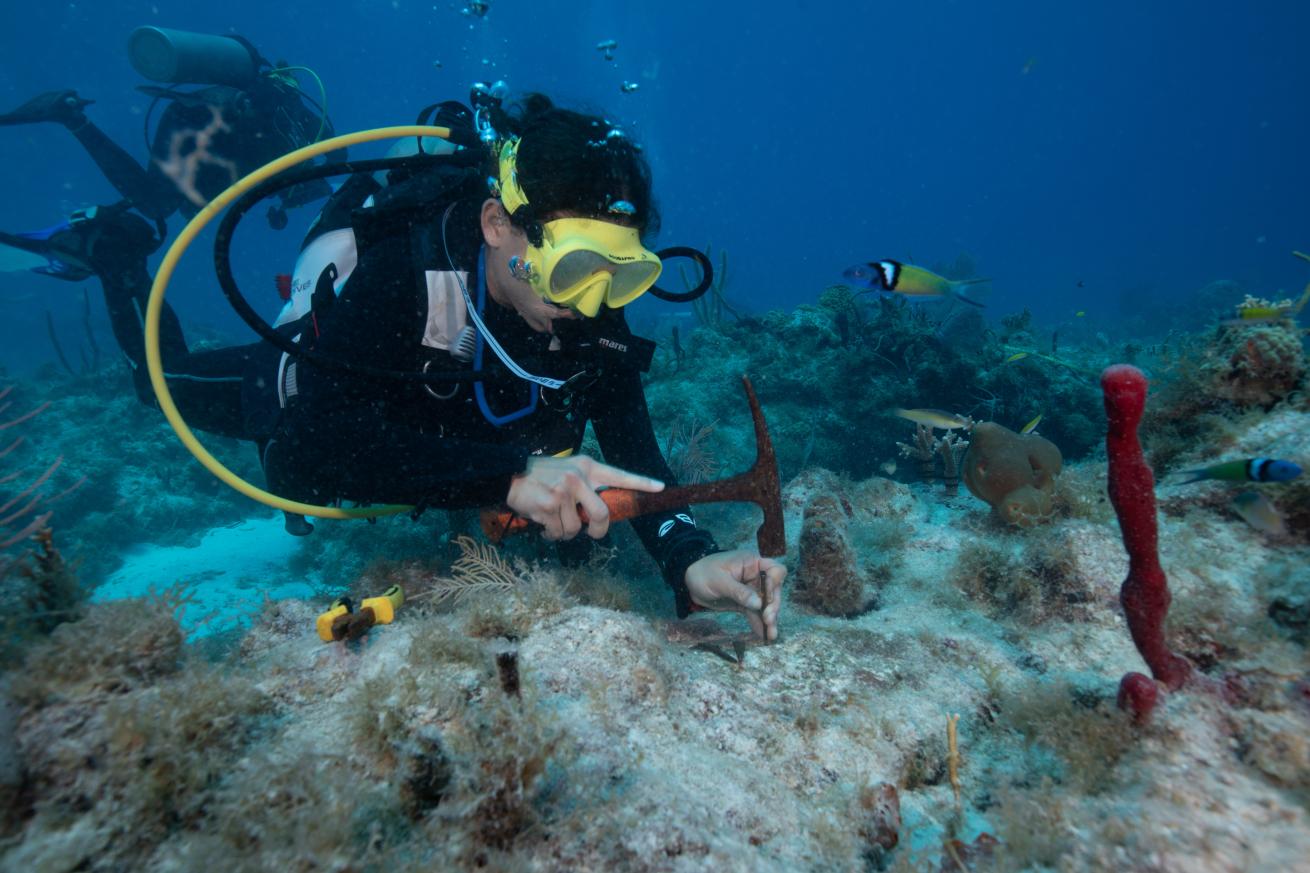
Kristin PaterakisRhyanna hammers in nails that will serve as the foundation for the coral fragments to grow
On the second day of training, we learn proper maintenance of outplanted coral, including identifying dead coral, diagnosing the cause of death and disposing of damaged or diseased coral.
In the case of fireworm or yellow-footed snail predation, the affected coral should be cut and buried. If the coral shows signs of disease, we are to notify an intern.
Deadly diseases require strict measures to prevent transmission; any diver that touches a diseased coral has to end their diving for the day.
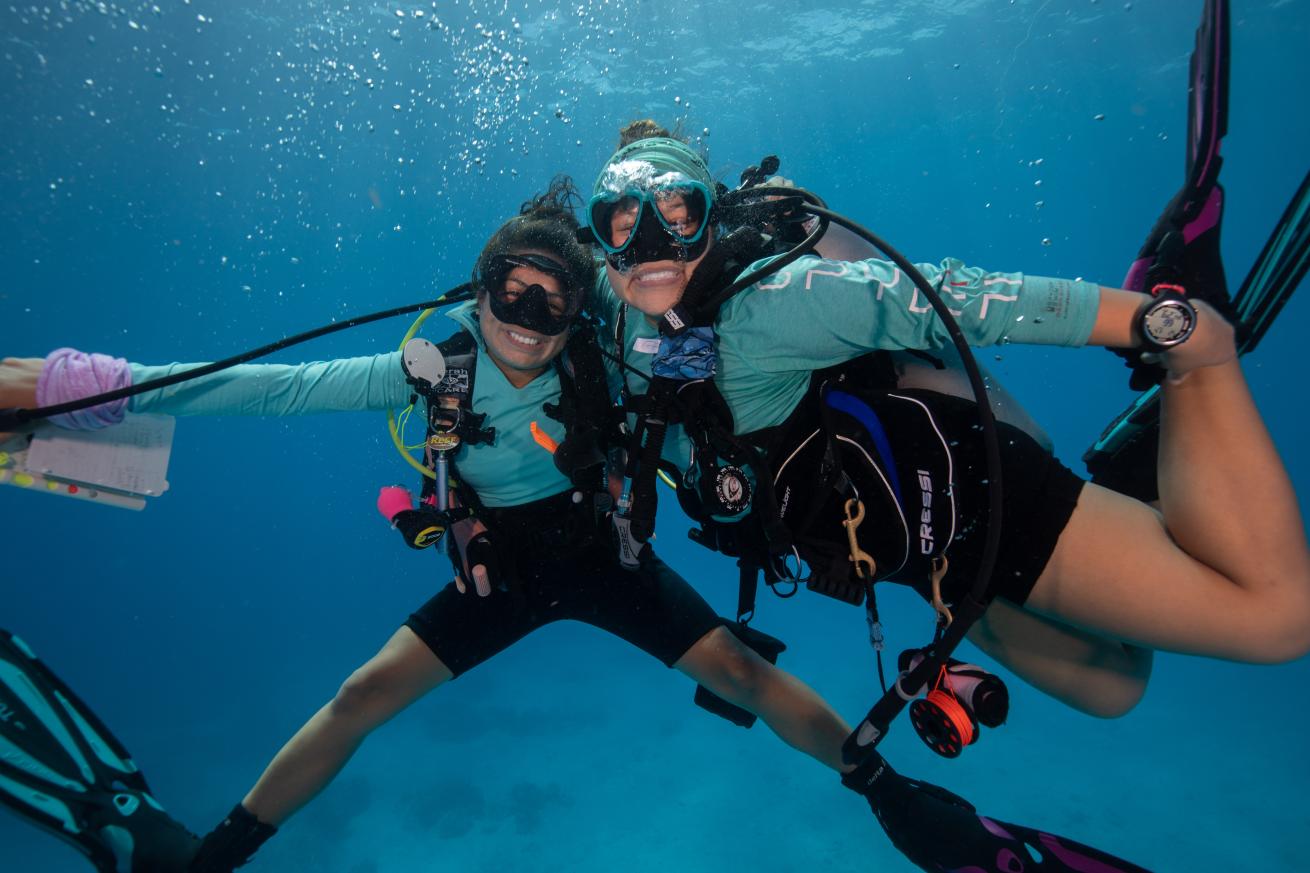
Kristin PaterakisI.CARE interns Norah Mendoza and Sharleen Muñoz pose for the camera
Mindful Moment
We had time to explore the site after our work was complete, and I observe the ecosystem around me. I thought about what it must have been like to dive on this reef when it was healthy and beaming with diversity. Now, the reef felt apocalyptic.
In the end-of-the-world storylines, the main characters never give up. They hold onto hope and fight. Looking around, I notice not the destruction, but the beauty. Some corals haven’t succumbed to diseaseand the previously outplanted staghorn coral is growing strong and fusing together.
Join the Florida Keys for the largest-ever marine debris cleanup event and festival May 2-5, 2024
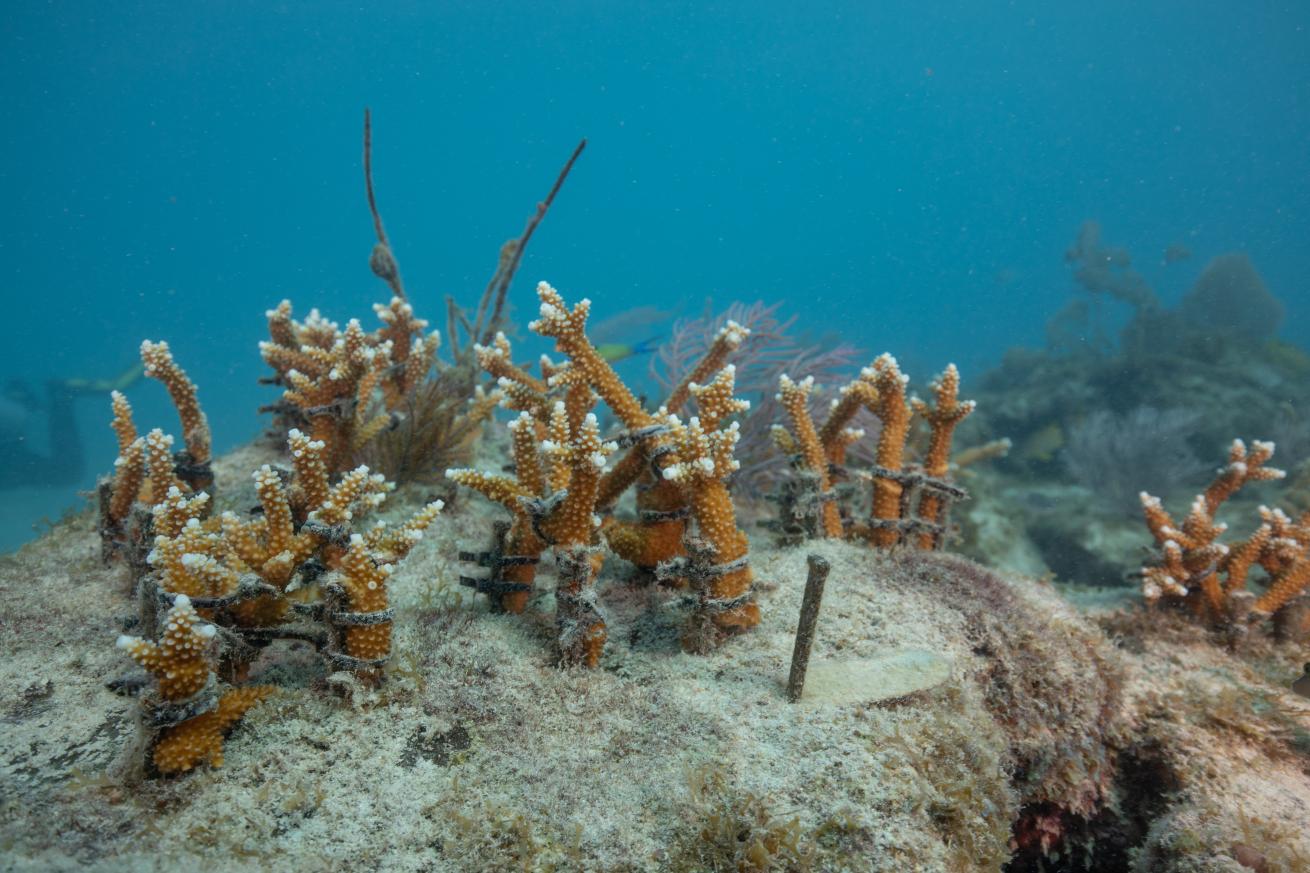
Kristin PaterakisCoral fragments begin to fuse together
Related Reading: The Warriors Fighting to Save Florida's Dying Corals
I truly felt I was doing something important, that I was part of something bigger than myself. I thought of Smith’s words of reflection: “We have no other choice… I refuse to be responsible for watching everything die and not doing anything about it.”
Smith and the rest of the I.CARE team’s efforts have not been in vain. They have outplanted over 11,000 corals to date. “We now are at just over 70 percent survival after two years in total. And that’s a testament to the science behind the corals. And the monitoring,” says Goldberg of the program’s success.
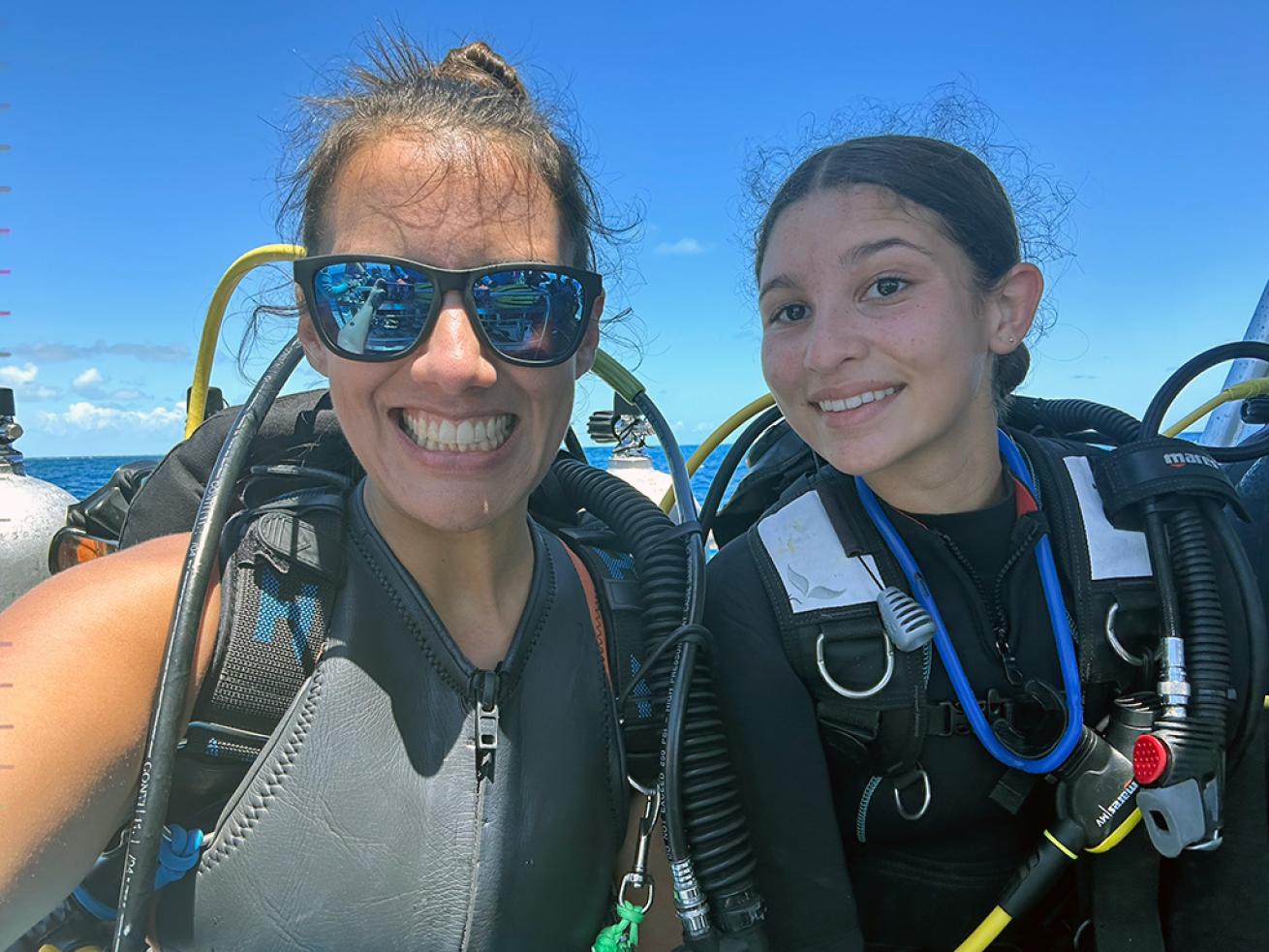
Kristin PaterakisThe author (left) and Rhyanna Risoli (right) pose during a surface interval onboard Key Dives
Next Generation of Ocean Torchbearers
Participating in the I.CARE workshop wasn't just about taking care of the environment; it was about passing on my passion to the next generation of divers. Riley echoes this sentiment, expressing gratitude for the experience and envisioning a day when the reef can regain its former strength. It’s evident that it's never too early to start giving back. Rhyanna shares, "Learning about our ocean never was an interest to me until I got involved in a program that included hands-on learning." Riley agrees, noting that working alongside the I.CARE team inspires her to contribute in any way possible because “every effort counts.”
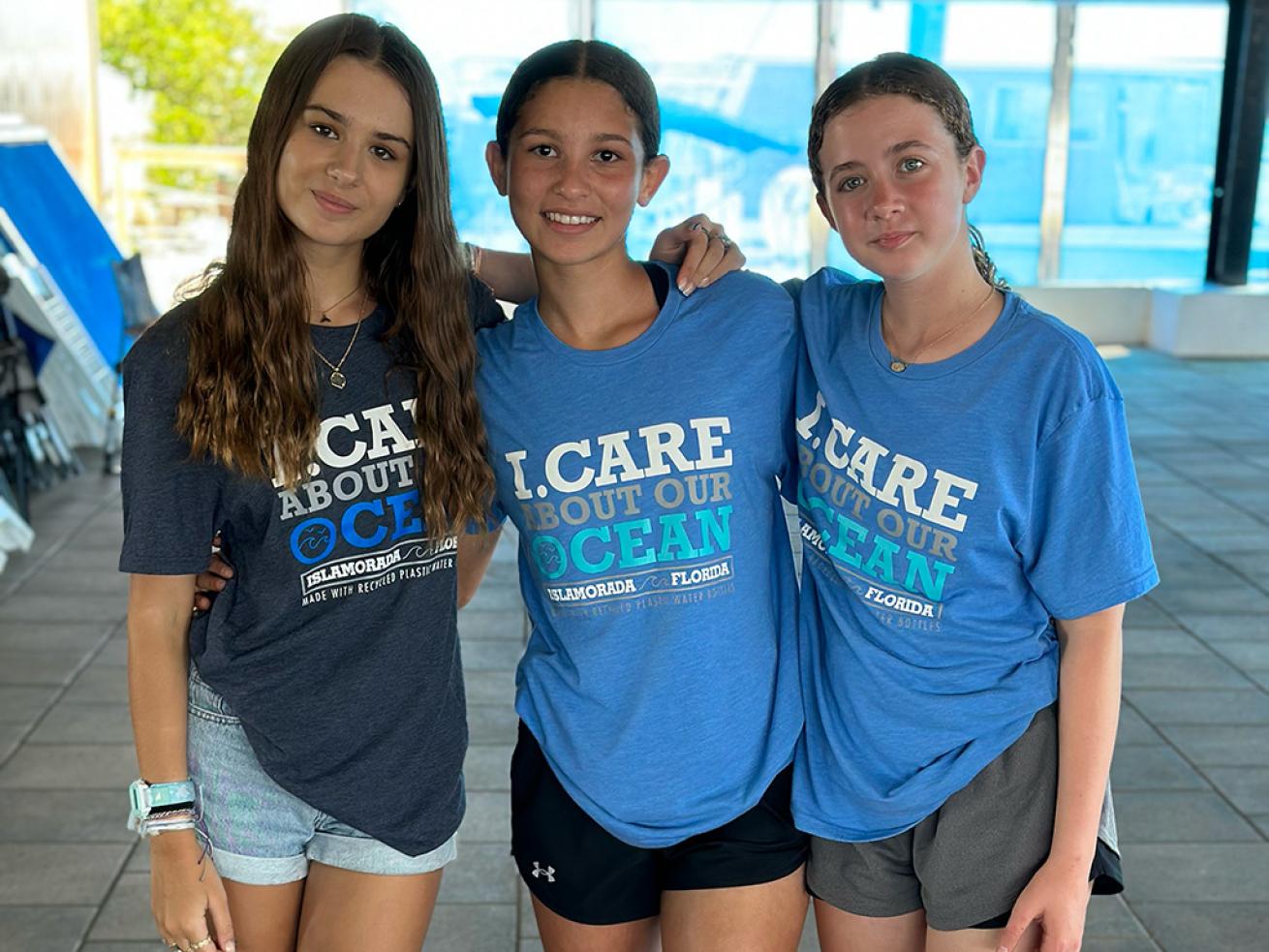
Kristin PaterakisDiveN2Life scientific divers-in-training at the I.CARE coral restoration program from left Tamara Bredova, Rhyanna Rispoli and Riley Young.
"Working with I.CARE made me feel like part of the team, not just a volunteer," says Rhyanna. The personalized attention from instructors made the experience even more enjoyable. For Riley and Rhyanna, they are keeping their career options open (a piece of advice I probably should have taken). However, they emphasize that volunteer programs, like I.CARE, have impacts beyond just our ocean ecosystem. "I gained experience working with people as a team and doing restoration work, leading to bigger projects," says Riley.
Both Riley and Rhyanna continue their contributions back to the environment by participating in coral restoration, joining clean-up dives and furthering their dive education and training with DiveN2Life. The beauty of volunteering lies in its flexibility—it doesn't have to define your life or career; it's about investing your free time in a meaningful cause. Whether you live near the Florida Keys or the Rocky Mountains, there are many ways to get involved.
Need to Know
- Divers must have a total of 30 logged dives in order to participate (for exceptions, contact I.CARE)
- Be prepared for two full days with workshops in the morning and dives in the afternoon
- Contact I.CARE to learn about their free volunteer program for locals
- Cost varies depending on dive operator
- You do not need to repeat the training if you return to volunteer within six months
To learn more and get involved with I.CARE coral restoration, visit icareaboutcoral.org.
Join the community of Ocean Torchbearers and pledge to save the ocean.










